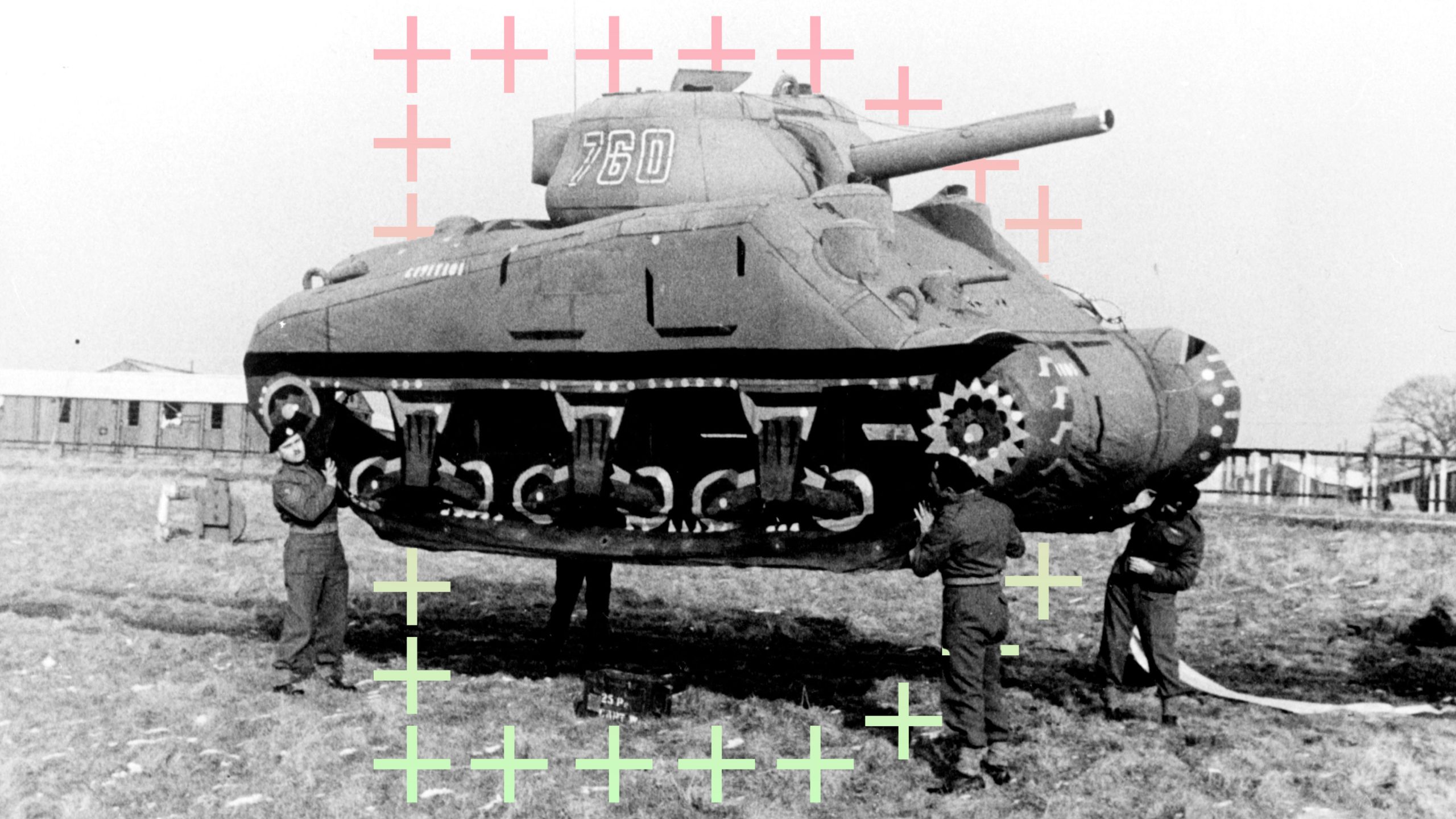Considered an essential part of military strategy canon, Sun-Tzu’s The Art of War emphasizes the importance of subterfuge against an opponent.
“All warfare is based on deception,” Sun-Tzu wrote. “Hence, when we can attack, we must seem unable; when using our forces, we must appear inactive; when we are near, we must make the enemy believe we are far away; when far away, we must make him think we’re near.”
Although written nearly 2,500 years ago in China, The Art of War’s lessons on deception would be relevant to 1940s Europe during World War II. Allied and Axis powers fought the war on the frontlines while racing towards innovative superiority and developing advanced technology to gain a strategic edge. While scientists and engineers built more destructive weapons, the Allies also followed Sun Tzu’s advice on the fine art of deception. The Americans recruited an unlikely cadre of designers and artists to develop tools of misdirection and confusion to aid those with tanks and rifles as they advanced through Europe.















